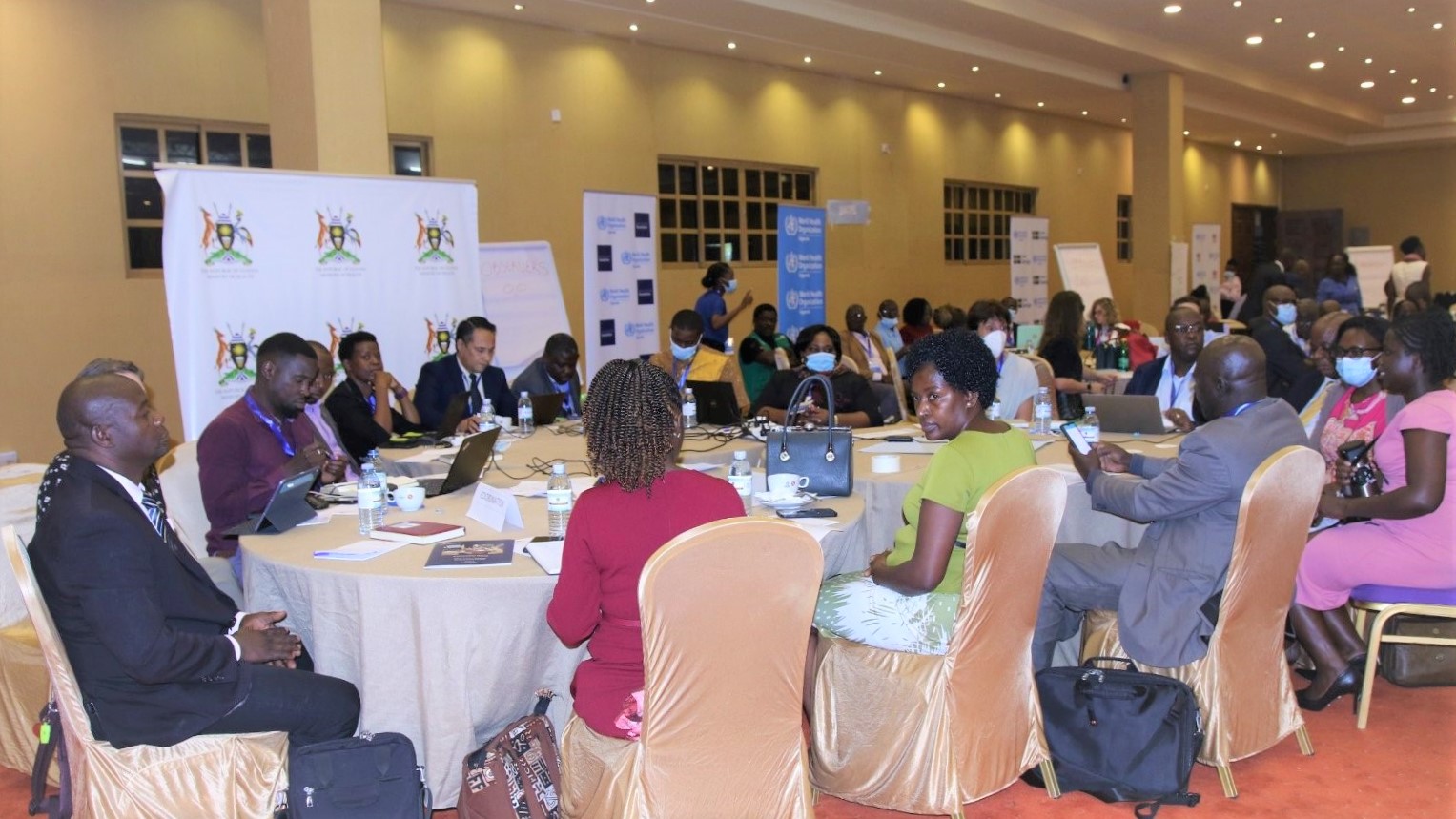2022 Sudan Ebola Virus Disease Outbreak, After Action Review, Speke Resort Munyonyo, Uganda, February 13th−16th, 2023
Authors: Mackline Ninsiima1,2*, Jane Frances Zalwango1,3, Hellen Nelly Naiga1,4; Institution affiliations: 1Uganda Public Health Fellowship Program, Uganda National Institute of Public Health, Kampala, Uganda, 2Kampala Capital City Authority, Kampala, Uganda; 3National Malaria Control Division, Ministry of Health, Uganda; 4Nutrition Division, Ministry of Health, Uganda; Correspondence*: Email: mninsiima@uniph.go.ug, Tel: +256787819496
The International Health Regulations (IHR) 2005, a legally binding agreement of countries to build the capability of detecting and reporting potential public health emergencies globally, require that all countries have the ability to detect, assess, report, and respond to public health events. Following a public health event, one of the recommended activities for countries to better prepare for and respond to these events is an After-Action Review (AAR). An AAR is a qualitative review of systems and processes in place prior to a public health event, what was done during the response and when, challenges encountered, and ways to mitigate these challenges in the future if another such event occurs. This can be accomplished through a variety of methods such as debriefing, working groups, key informant interviews, and mixed methods. This review should be conducted within three months after the response to a public health event, while events are still fresh and can be clearly recalled.
Uganda has always been praised for adhering to these guidelines, with this being her third AAR, following Marburg and Ebola Virus Disease (EVD) outbreaks in 2018 and 2019, respectively. This AAR was held a month after the end of the 2022 Sudan Ebola Virus Disease outbreak declaration on January 11, 2023, and organized by the Ministry of Health in collaboration with the World Health Organization. Uganda used the working group method for this review, which involved groups of people with expertise in specified operational pillars coming together to discuss and share opinions on key response areas in that pillar. A facilitator stirred these groups, and the group note taker took notes from the discussion using a pre-qualified note taking tool.
During the preparatory phase, eleven operational pillars in the EVD response were identified: 1) Coordination and Leadership; 2) Surveillance; 3) Laboratory; 4) Continuity of Essential Health Services; 5) Case Management; 6) Infection Prevention and Control; 7) Risk Communication; 8) Water, Sanitation and Hygiene (WASH); 9) Logistics; 10) Strategic Information, Research and Innovation (SIRI) and 11) Protection from Sexual Exploitation, Abuse, and Harassment (PSEAH); facilitators and note takers that included members from the Uganda National Institute of Public Health allocated to these pillars and trained on how to conduct an After Action Review by experts from WHO. The activities began on February 8, 2023, with a two-day review at the subnational level in selected districts with EVD cases: Kampala City, Mubende, and Kassanda, and then at the national level from February 13-16, 2023.
The AAR was a success on both levels and a valuable learning experience for many. It was attended by a number of stakeholders, including responders, government officials, partners, and in-country and foreign observers, who shared their objective experiences with the EVD outbreak response and recommended ways to improve. Participants included representatives from the Ministry of Health – Uganda, District Local Governments, Kampala Capital City Authority (KCCA), Ministry of Health – Kenya, World Health Organization (WHO), US Centers for Disease Control & Prevention (CDC), Uganda National Institute of Public Health (UNIPH), United States Agency for International Development (USAID), African Field Epidemiology Network (AFENET), Infectious Disease Institute (IDI), Medecins Sans Frontieres (MSF), Baylor College of Medicine Children’s Foundation – Uganda, Regional Referral Hospitals, United Nations Children’s Fund (UNICEF), Uganda Virus Research Institute (UVRI), International Organization for Migration (IOM); and the media fraternity among others.
Several opinions were raised and discussed during the discussions, with 6 challenges and 3 priority areas for improvement identified per pillar based on their impact and level of difficulty for implementation. Among the key findings of this review was the underperformance with regard to the 7-1-7 approach to epidemic preparedness and response. The ideal time frame is 7 days to detect an outbreak, 1 day to notify public health authorities, and 7 days to mount an effective response. However, our evaluation was 46-1-9, with the very late detection of the outbreak, indicating the need for a more robust surveillance system for viral hemorrhagic fevers at both the facility and community levels.
All of this was compiled into a comprehensive report to aid in the preparation and response to a similar public health emergency in Uganda, as well as to provide guidance to other countries around the world.
We are grateful to the Rapid Response Teams, Implementing Partners, political leaders, communities from affected districts, and Ugandans in general for controlling this EVD outbreak in just 69 days following its declaration on September 20, 2022.


